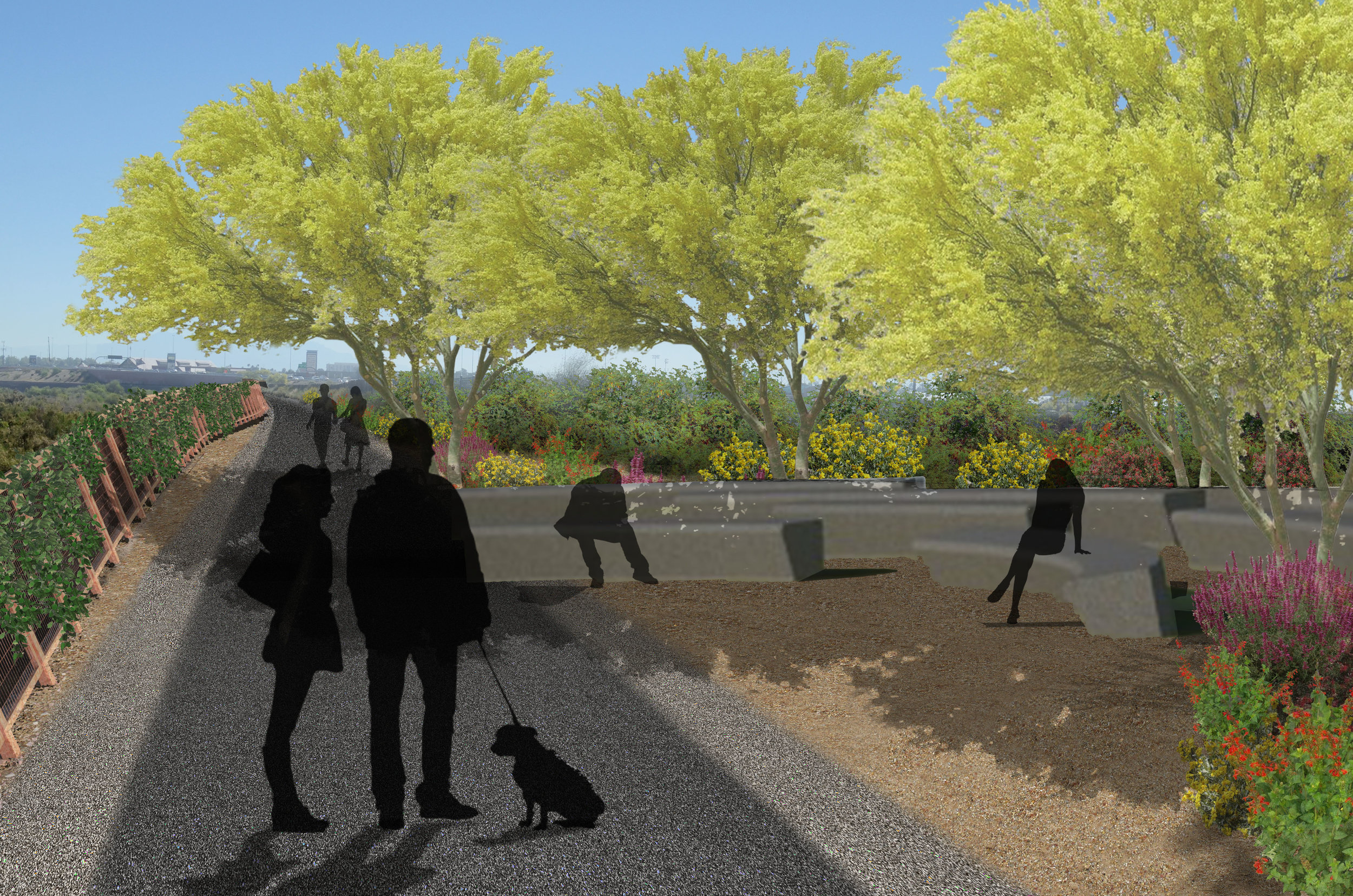Urban Designer Tiffany Halperin Sees Unique Project Come to Fruition
Mesa, AZ (March 11, 2017) – The city of Mesa has officially opened a long-awaited pedestrian and bicyclist pathway connecting the municipality to nearby Tempe. The opening of Segment 3 of the Rio Salado Regional Pathway completes a missing link in the regional non-motorized system and is expected to be widely used by bicycle commuters between Mesa and Downtown Tempe.
The project has been in the works for about a decade, and this segment of the pathway presented an unprecedented and tricky design challenge. The pathway is along a narrow right-of-way on a levee sandwiched between the river and the wastewater treatment plant retention ponds.
Phoenix urban designer Tiffany Halperin, who has been a part of the project from the planning and funding stages, says it was definitely a challenge: The limited space meant she had to focus predominantly on hardscape elements because there was little room for shade trees. But, because of the project’s location in view of a freeway stack exchange, she also saw a unique opportunity to make a statement about the city of Mesa and the regional trail system through structural design.
“This segment is special because you can see it from the air and from several freeway routes,” Halperin says. “It is a natural focal point, letting everyone know we have this wonderful regional pathway system.”
Halperin led the design concept portion for Segments 1 through 4 while working with Angela Dye’s office, and years later at her own firm won the design and landscape architectural services for Segment 3, for which she teamed with TY LIN Engineering.
“TY LIN has been a strong and dependable partner throughout and I have valued their leadership in this last phase,” she says.
Another thing that sets this segment apart is the teamwork required to create it. The Segment 3 team worked with J2 Engineering, the lead on Segment 4. The teams worked together on Segments 3 and 4 to create the character elements that Mesa will continue to apply to other portions of the Rio Salado Pathway.
The safety railing was a big consideration. Halperin’s team presented safety research, design precedent research and design concepts. The City of Mesa staff and City Manager combined two of the concepts, which resulted in the overlay of a rectilinear grid on a curved railing. This design provides a high level of safety for cyclists and also creates the feeling that the pathway is wider. J2 Engineering advanced the design concept and included interpretive elements to come up with the final design which appear in both Segments 3 and 4. The interpretive elements include wave imagery welded to the mesh screen and the application of “fins” to railing posts for a decorative effect.
Because the project is so visible, Halperin’s team had to consider daytime and nighttime appeal. The project can be seen from the air and freeways on three of its four sides, so it was important to consider views from all sides of the design features. The design effort addressed these opportunities and proposed two rest areas featuring art elements as shade as well as a pathway portal marking exit and entrance into Tempe that illuminates at night. Though many of the design elements were not installed in this phase due to budget constraints, city officials say they are pleased with how it turned out.
“We’re very excited to show it off,” says Michaela Chelini, project manager for the city’s Engineering Department. “The scheme and feel are modern yet natural.”
This segment of the pathway isn’t just visually pleasing; it will also give Chicago Cubs fans easy access to the team’s spring training home at Sloan Park. Segment 3 goes right to the park, so Tempe residents can hop on a bicycle and pedal the mile or so to check out the team in action.
Only a small portion of Halperin’s design vision became a reality at the opening, but she hopes future phases of the project will fund other elements such as structural shade inspired by the saguaro cactus bloom. For now, though, she is happy to be a part of a project that truly contributes to urban connectivity. In its current state, the project provides seating and shade along a safe, accessible pathway for pedestrians and bicyclists traveling between Tempe and Mesa and beyond.



